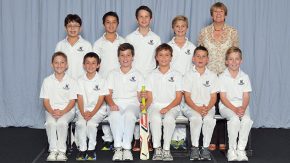Digital Brain
Digital Culture And Sleep Deprivation
Technology saturates many of our waking moments. But how does it impact our rest and sleep? Technology is an incredibly powerful tool, which can help achieve great educational goals. Therefore, in this digital era we need to be thoughtful and strategic with our use of technology to prevent addiction and insomnia.
Our brains are superlatively designed to adapt to the surrounding environment. This is called neuroplasticity. The connections in our brain cells are influenced, strengthened and changed by our daily experiences. Subsequently a world filled with all pervasive digital technology has a powerful influence on our brains. This screen-based life style can have positive effects. For example technology facilitates creative insight and deep understanding through innovative and collaborative projects. Additionally technology assists learning and performance in skills that require continual and directed repetition. But technology can have a detrimental impact on neural processes, such as sleep patterns.
According to Dr Seton from the Woodlock Institute of Medical Research, sleep deprivation affects one in ten teenagers but only two percent recognise the problem as a medical issue. Electronic devices are a frequent cause of sleep deprivation. This is largely due to the portability of technology. Children can easily spend time in their bedroom, even in their bed using their iPods, iPads and laptops. The light from these screens lowers melatonin levels, making it difficult to fall asleep. Additionally technology is now a key means of social connectivity, so children are eager to stay up late socialising online due to a fear of missing out (FOMO).
We want our children to gain the maximum educational benefit from technology. Therefore, here are five strategies for managing technology and sleep deprivation.
Screen Time: Discuss the screen time hours spent using technology. This should include computers, tablets, phones and gaming consoles. Set time limits for screen time and be consistent with usage throughout the week. In addition stop screen time one hour before bed so that sleep is not interrupted.
Clear Boundaries: For children in primary school, all technology is best used and stored in public living areas. This eliminates the temptation to stay up late socialising online. It also gives parents better awareness of how and when devices are being used. Set up designated spaces for charging devices at home so that is easy to create routine of plugging them in before bedtime.
Age Restrictions: Look carefully in to the age restrictions of social media. Most social media networks, including Facebook, Instagram, KIK Messenger and SnapChat have a recommended age restriction of thirteen years. If children become addicted to social media at a young age, it can be incredibly difficult to manage in teenage years.
Notice the Signs: Look out for warning signs indicating sleep deprivation. These can include poor concentration levels, moodiness, feeling lethargic and excessive sleep on the weekend. Sleep deprivation can cause side effects such as risk-taking, poor self-esteem, depression and obesity.
Walk The Walk: As adults we are also at risk of sleep deprivation due to excessive hours spent on digital technologies. It is helpful to walk the walk with our children and students, to model behavior that demonstrates clear boundaries and thoughtful use of technology.
References
Sharples, S. (2014, May 6). Clinic gives weary teens a good night’s sleep. Inner West Courier Inner City, p.8.
Greenfield, S. (2012, August 7). How digital culture is rewiring our brains. Sydney Morning Herald.
Emma Clemens
Innovative Learning Leader






